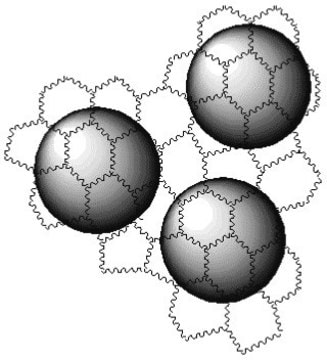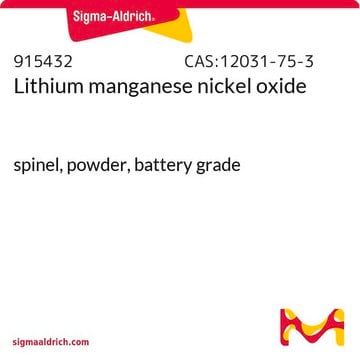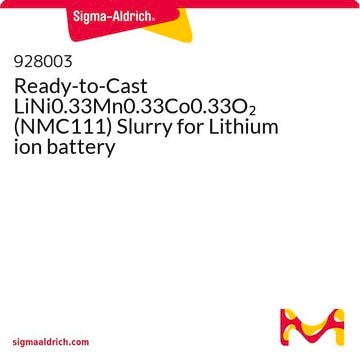934712
NMC811
electrode sheet, aluminum substrate, size 5 in. × 10 in.
Sinónimos:
Lithium Nickel Manganese Cobalt Oxide, NMC 811 cathode
About This Item
Productos recomendados
material
aluminum substrate
Quality Level
grade
battery grade
description
Nominal Voltage:3.75 V vs. Li/Li+
form
sheet
composition
Active material loading 10.0 mg/cm2 ± 5%
greener alternative product characteristics
Design for Energy Efficiency
Learn more about the Principles of Green Chemistry.
sustainability
Greener Alternative Product
size
5 in. × 10 in.
thickness
16 μm , aluminum current collector
60 μm , excluding current collector
particle size
10-13 μm (active material characteristic)
capacity
2.0 mAh/cm2±5 % (Areal capacity)
application(s)
battery manufacturing
greener alternative category
Categorías relacionadas
General description
Application
related product
signalword
Warning
hcodes
Hazard Classifications
Carc. 2 - Skin Sens. 1
Storage Class
13 - Non Combustible Solids
wgk_germany
WGK 3
flash_point_f
Not applicable
flash_point_c
Not applicable
Certificados de análisis (COA)
Busque Certificados de análisis (COA) introduciendo el número de lote del producto. Los números de lote se encuentran en la etiqueta del producto después de las palabras «Lot» o «Batch»
¿Ya tiene este producto?
Encuentre la documentación para los productos que ha comprado recientemente en la Biblioteca de documentos.
Nuestro equipo de científicos tiene experiencia en todas las áreas de investigación: Ciencias de la vida, Ciencia de los materiales, Síntesis química, Cromatografía, Analítica y muchas otras.
Póngase en contacto con el Servicio técnico










